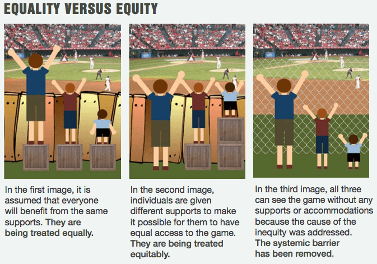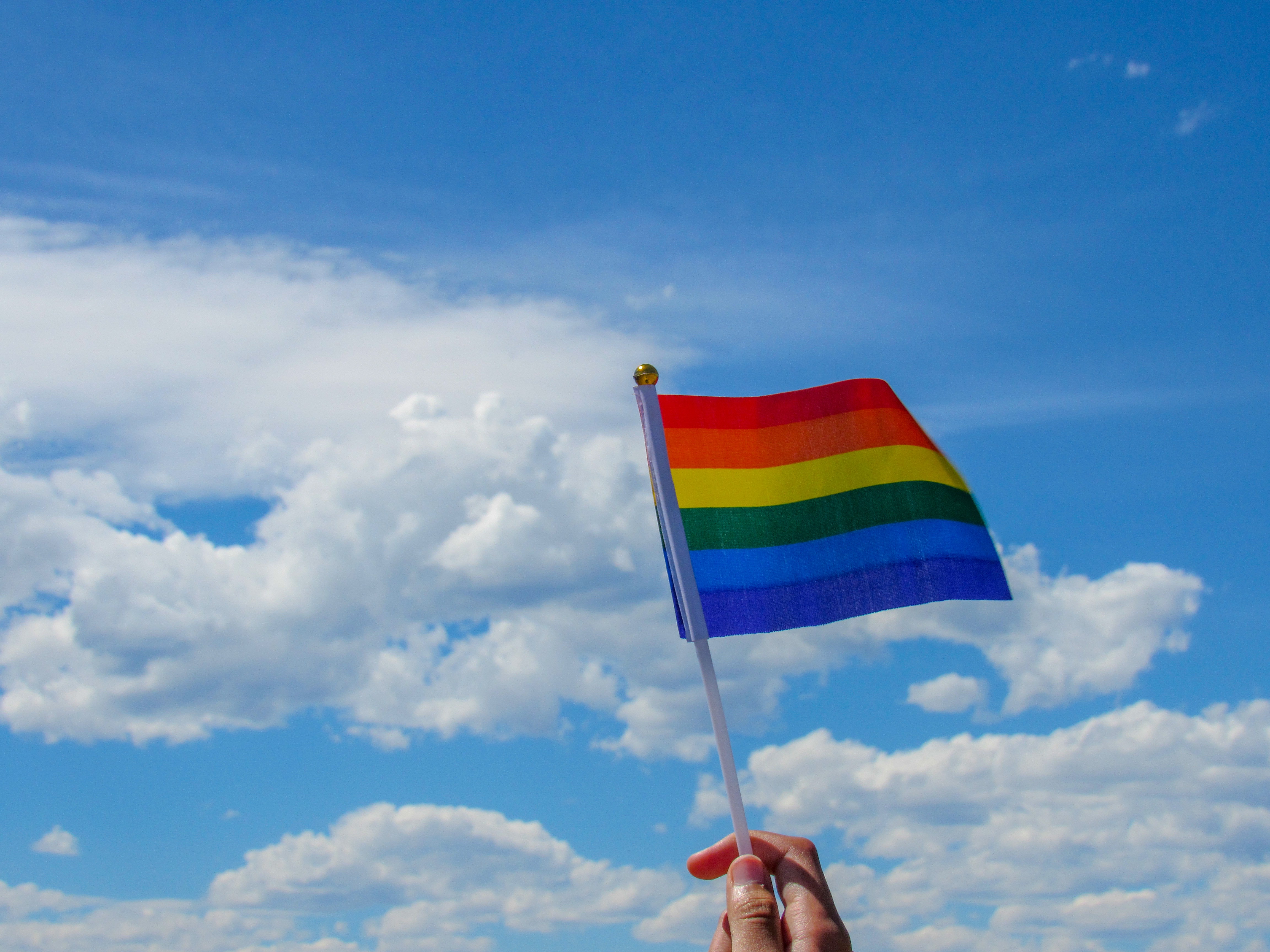When it comes to diversity, equity and inclusion (DEI), actions speak louder than words[1]. But, when it comes to building inclusive working environments, words matter. Forget sticks and stones — the wrong language can cause untold harm in the workplace.
In the same way you invest time and energy in using language that will appeal to your customers, as a business leader, you need to carefully consider how you talk to and with your employees.
Company culture is built and reinforced through communication and relationships. By choosing respectful and appropriate language, you help to strengthen those relationships and demonstrate your values as a company.
However, while using the right words is important, many terms in the field of DEI are controversial – and some people worry that they are going to unwittingly cause offence. Just in case, here are a few definitions that you may find helpful:
Ableism
Discrimination against people with disabilities. This is more common than some people realise – much of it is the result of thoughtlessness, rather than active prejudice.
Autistic Mama[2] gives a great way of checking whether something is ableist – replace “disabled” with gender or race. If women aren’t able to enter your meeting rooms, your company is clearly being sexist. Ergo, if disabled people can’t access those rooms, your company is ableist.
Ageism
Prejudice or discrimination on the basis of age.
In the workplace, this could be explicit – not hiring a candidate on the basis of their age, for instance, or laying someone off because of age. Implicit bias can also be a major issue. For instance, when hiring, employers might assume that an older applicant will be less energetic, less up-to-date, or likely to retire soon[3].
Accessibility
Measures taken to make sure that everyone has equal access to buildings, facilities and services, regardless of physical or neurological differences.
If you’re now working remotely, you’ll need to consider digital accessibility – here’s a useful toolkit by the Partnership on Employment and Accessible Technology.
Allyship
The role that those in dominant groups can play in dismantling oppressive systems. Being an ally involves acting as a “success partner” for those from historically excluded groups, proactively building environments where everyone can succeed and thrive.
DEI expert, Mel Andrada explains how to be an ally on our blog here. The first step is to do your own inner work, listen carefully and do your research.
Amplification
In the words of Kay Fabella, “For everyone to be heard, some people are going to need an amp.” Amplification is the act of giving a voice and a platform to those people who have historically been excluded from the conversation.
In the workplace, this could be as simple as running “silent meetings” to ensure that you hear from people who don’t feel as confident speaking up in a group. It could look like saying, “I’m sorry, I think you were interrupted[4] – what were you going to say?”
Anti-racism
The practice of actively opposing racism. Here’s a reading list from the Harvard Business Review on how to build anti-racist companies.
Black
A term to describe people who belong to a population group with dark skin pigmentation. There’s some debate about whether it should be capitalised. At Learn Amp, we prefer to capitalise it to reflect a shared cultural identity. In the words of Professor Lori L. Tharps, “Black with a capital B refers to people of the African diaspora. Lowercase black is simply a color.[5]” See further reading for more on this.
Cisgender
People whose gender identity matches the sex they were assigned at birth.
Cultural fit
This term is supposed to define employees that align well with your core company values. Unfortunately, research suggests that it really means “people like me.[6]” It often describes a “gut feeling” that hiring managers fall back on to justify recruiting decisions. This “gut feeling” can sometimes be the result of implicit bias (more on that later). More often than not, it’s based on shared experiences[7]. As a result, it’s a serious impediment to diversity.
Instead, try “values fit.” Hire on the basis of candidates’ alignment with explicitly stated and specific values and provide concrete examples and a standardised screening procedure for hiring managers. Here’s our guide to building a diverse recruitment pipeline when you’re working remotely.
Diversity
In a business context, diversity refers to a workplace with employees from diverse genders, races, ethnicities, religions, socioeconomic and educational background, and physical and neurological abilities. It’s also the secret ingredient for:
Dominant culture
In a diverse society, the dominant culture[12] is the one imposed on subordinate cultures through economic or political power, suppression, or media monopolisation.
Equality
Equality is the idea that everyone is equal and should be treated equally. Obviously, this is a key starting point for building fairer workplaces. Equality is often referred to when talking about opportunities – ensuring everyone has an equal opportunity to fulfil their potential excel in the workplace. But “equality” has its critics.
To quote Everyday Feminism[15], “Treating everyone exactly the same actually is not fair. What equal treatment does do is erase our differences and promote privilege.” At Learn Amp, we like to think of equality as an end goal and we prefer thinking of equity as the means to get there.
Equity
The problem with equality is that treating everyone equally assumes that we all started from the same point. For this reason, many DEI experts prefer the term “equity.” Equity acknowledges the concept of privilege in terms of creating a fairer system.
Equity is the process of promoting fairness while also recognising that we have all had access to different resources and opportunities. As Mel Andrada words it, “It is not about treating everyone the same. It is about offering different levels of authentic and meaningful support.”

Ethnicity
The state of belonging to a social group with shared national or cultural traditions. The difference between race and ethnicity[16] is more complex than it might seem. Scroll down to see “race”.
Gender
The World Health Organisation[17] describes gender as the “socially constructed roles, behaviours, activities and attributes that a given society considers appropriate for men and women.” Individuals have their own gender identity and gender expression – that is, their own definition for how they align with and express alignment with these social perceptions of “masculinity” and “femininity.” See also, non-binary.
Are you enjoying our blog? Subscribe to receive a monthly email with our latest articles, blogs and white papers.
Guys
For some, a term meaning a group of people of any gender; for others, a male-only descriptor that triggers feelings of exclusion.[18] For American English speakers, alternatives abound – “folks”, even “y’all”. For Brits, if in doubt, “people” or “everyone” can be a handy substitute.
Implicit bias
Implicit biases are attitudes and stereotypes that affect our behaviour in an unconscious manner. Everyone has them[13]. We may well not be aware of them, and they may go against our expressed beliefs and values. To check yours, take the Harvard Implicit Association Test – and prepare to feel uncomfortable.
Inclusion
If diversity involves ensuring that people from diverse backgrounds and communities are working in your company, inclusion refers to making sure that everyone in your company is seen, heard and valued. As Verna Myers puts it, “Diversity is being invited to the party; inclusion is being asked to dance.”[14]
Latinx
Latino is a masculine-only adjective. For a more inclusive descriptor for people with Latin American or Spanish ancestry, try Latinx. Or better yet, Hispanic, which is preferred by over 50% of this community.[19]
LGBTQIA+
Stands for lesbian, gay, bisexual, transgender, queer/questioning, intersex, asexual, and other related groups, as well as allies. For a definition of all these letters, see here.
Microaggressions
Professor Derald Sue provides a solid definition of microagressions: "Brief and commonplace daily verbal, behavioral, or environmental indignities, whether intentional or unintentional, that communicate hostile, derogatory, or negative racial slights and insults toward people of color."[20] For some depressing examples, see this Buzzfeed article.[21]
It’s worth noting that not everyone agrees with this terminology. In his book How to Be an Antiracist, Ibram X. Kendi writes, “What other people call racial microaggressions I call racist abuse…Only racists shy away from the R-word—racism is steeped in denial.”[22]
Neurodiversity
The idea that brain differences like ADHD and autism are the result of normal variations in cognitive function.
Hiring for neurodiversity may well be a competitive advantage. While some neurodiverse hires may need accommodations at work, one study found that neurodiverse teams were 30% more productive.
Nonbinary
A term used to describe people who do not identify as exclusively either male or female. Sometimes also known as genderqueer or gender fluid. Scroll to “Pronoun”.
Person of Colour
A collective term for people who are not of Northern European origin. It is a well-meaning term that many people prefer.
However, for others, it can be very problematic.[23] For starters, everybody has a colour. Suggesting that non-white people are the only ones who are coloured implies that pale pink skin is the norm. Also, it lumps people from diverse communities and backgrounds into a single homogenous group.
So, how should you describe someone without causing offence? Professor Yolanda Moses makes a simple suggestion: “Just ask them.”[24]
Privilege
In the words of Diya Khanna, “To support diversity and inclusion, understand privilege. Privilege is the advantages enjoyed by a group, beyond what’s available to others. It is institutional, not individual, and largely invisible to those who have it.”[25] As Kay Fabella told us during her interview, those who have experienced privilege have had more tailwinds, and the less privileged have been facing the headwinds.
Pronouns
No, this isn’t a grammar class – pronouns, in this context, means the individual’s right to choose how they prefer to be addressed in terms of gender. Examples of gender-neutral pronouns include the singular they (e.g. They like themself) or ze (Ze likes hirself). Try inviting all employees to include their pronoun preferences in email signatures or share them at the beginning of meetings.
Queer
Queer used to be a pejorative slur but has more recently been embraced by many in the LGBTQIA+ community as an umbrella term for non-heterosexual and non-binary identities. To understand the complexity of the term, read this article on Them.[26]
Race
Race used to be thought of as a genetic difference between different groups with similar physical traits. Today, geneticists agree that differences within any given racial group are often greater than differences between groups.[27] Race is essentially a social construct that shapes our lived experience, even if it has no biological basis.
Tokenism
Making a gesture towards diversity, equity and inclusivity in the workplace (such as hiring someone from a non-dominant group) purely to prevent criticism or present an appearance of fairness.
To combat this practice, as well as building a top-down strategy and committing to a long-term DEI program, organisations must ensure that employees aren’t called on to be the sole representative for their entire group.
Underrepresented
Underrepresentation refers to a lack of correlation between the proportion of a group in society as a whole and in a particular organisation, community or institution. For instance, women make up 50% of the population as a whole, but only 20% of executive committees in the FTSE 250.[28]
Woke
Originally a term used by Black activists to refer to “healthy paranoia, especially about issues of racial and political justice,” popularized by the #BlackLivesMatter movement.[29] It later shifted to mean people who were aware of social injustice. Today, it has taken on some pretty ironic overtones.
When you so woke, you asleep. 😜 pic.twitter.com/USEgKWPExM
— BBC Comedy (@bbccomedy) June 22, 2018
Want to find out how Learn Amp can help your business be a more inclusive place to work? Book a chat with a member of our team.
Further Reading
https://www.hivelearning.com/site/diversity-inclusion-glossary/
https://www.sca.org/wp-content/uploads/2020/01/DEITermsConcepts.pdf
https://www.nytimes.com/2020/07/05/insider/capitalized-black.html
References
[1] https://diversityinpractice.org/actions-speak-louder-than-words-a-look-at-fortune-500-diversity-and-inclusion-policies/
[2] https://autisticmama.com/know-something-ableist/
[3] https://www.shrm.org/resourcesandtools/hr-topics/behavioral-competencies/global-and-cultural-effectiveness/pages/viewpoint-how-to-steer-clear-of-ageism-in-the-workplace.aspx
[4] https://hbr.org/2016/09/why-hillary-clinton-gets-interrupted-more-than-donald-trump
[5] https://www.nytimes.com/2014/11/19/opinion/the-case-for-black-with-a-capital-b.html
[6] https://hbr.org/2015/03/5-myths-of-great-workplaces
[7] https://www.nytimes.com/2015/05/31/opinion/sunday/guess-who-doesnt-fit-in-at-work.html?_r=1&mtrref=undefined&gwh=17DE4120763365C6B265FA695DC6621E&gwt=pay&assetType=opinion
[8] https://www.forbes.com/sites/annapowers/2018/06/27/a-study-finds-that-diverse-companies-produce-19-more-revenue/#25d466de506f
[9] https://hbr.org/2016/11/why-diverse-teams-are-smarter
[10] https://www.mckinsey.com/business-functions/organization/our-insights/delivering-through-diversity
[11] https://inside.6q.io/benefits-of-cultural-diversity-in-the-workplace/
[12] https://www.oxfordreference.com/view/10.1093/oi/authority.20110803095725838
[13] http://kirwaninstitute.osu.edu/research/understanding-implicit-bias/
[14] https://www.americanbar.org/groups/gpsolo/publications/gpsolo_ereport/2012/june_2012/diversity_invited_party_inclusion_asked_dance/
[15] https://everydayfeminism.com/2014/09/equality-is-not-enough/
[16] https://www.livescience.com/difference-between-race-ethnicity.html
[17] https://web.archive.org/web/20170130022356/http:/apps.who.int/gender/whatisgender/en/
[18] https://www.theatlantic.com/family/archive/2018/08/guys-gender-neutral/568231/
[19] https://www.pewresearch.org/hispanic/2020/08/11/about-one-in-four-u-s-hispanics-have-heard-of-latinx-but-just-3-use-it/
[20] https://www.researchgate.net/publication/6315413_Racial_microaggressions_in_everyday_life_Implications_for_clinical_practice
[21] https://www.buzzfeed.com/hnigatu/racial-microagressions-you-hear-on-a-daily-basis
[22] https://www.ibramxkendi.com/how-to-be-an-antiracist-1
[23] https://slate.com/human-interest/2019/02/people-of-color-phrase-history-racism.html
[24] https://www.sapiens.org/column/race/people-of-color/
[25] https://www.seattletimes.com/explore/careers/to-support-diversity-and-inclusion-understand-privilege/
[26] https://www.them.us/story/what-does-queer-mean
[27] https://genderedinnovations.stanford.edu/terms/race.html
[28] https://www.spencerstuart.com/research-and-insight/gender-diversity-on-executive-committees
[29] https://splinternews.com/how-woke-went-from-black-activist-watchword-to-teen-int-1793853989





